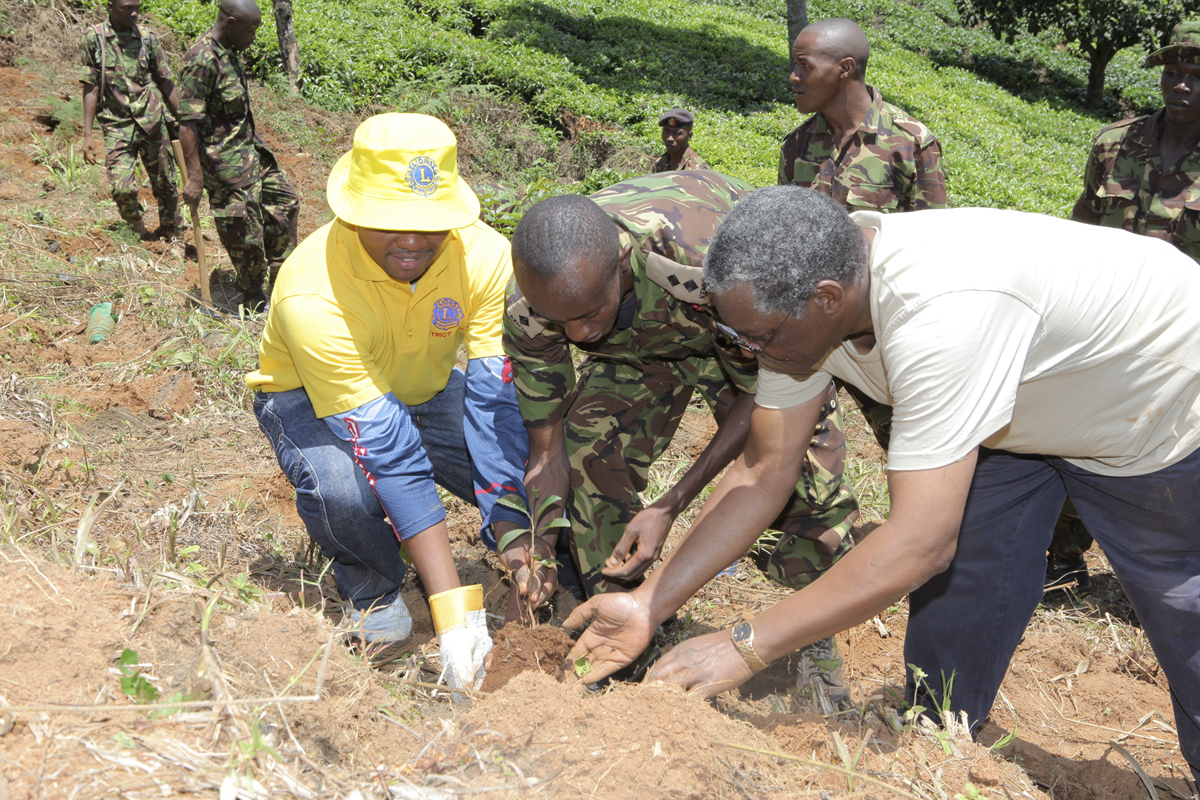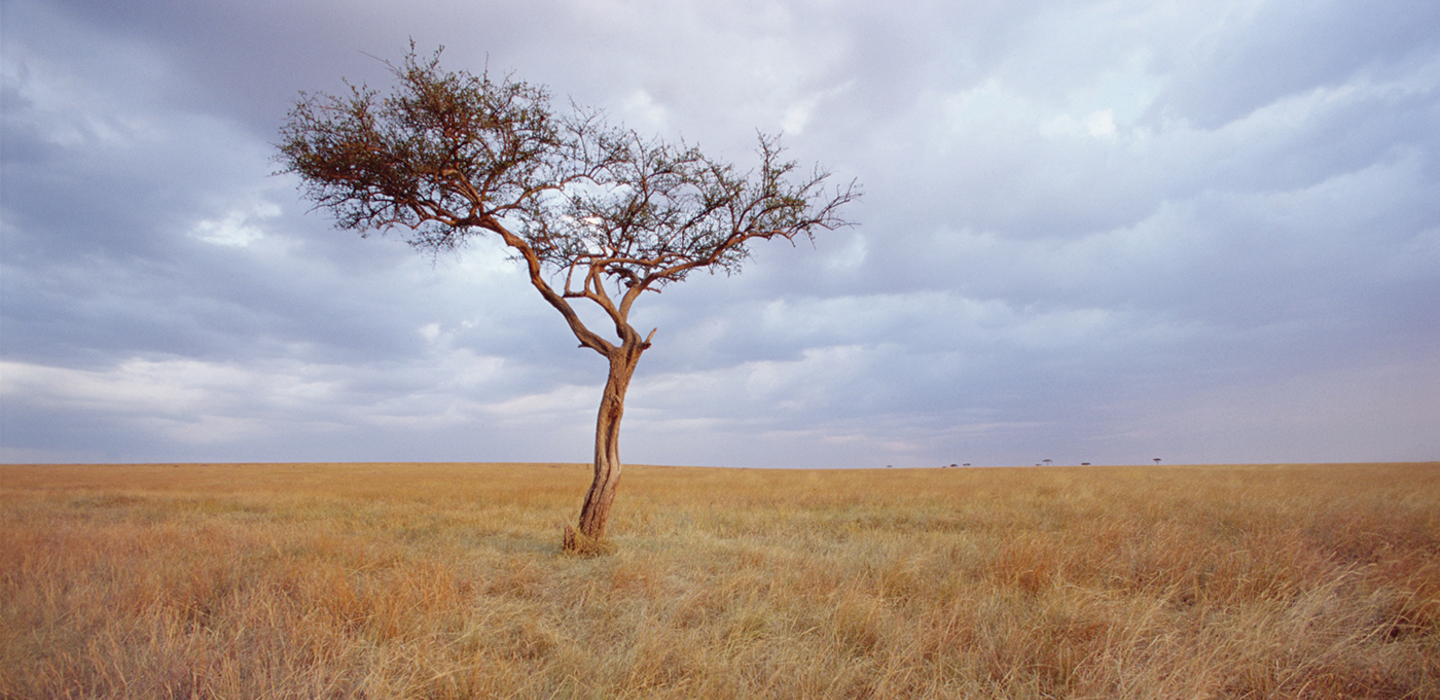In 1970, Theodor Geisel—better known to the world as Dr. Seuss—spent one breezy afternoon during his vacation at the posh Mount Kenya Safari Club writing the bulk of the manuscript for what would become one of his most popular (and controversial) books, The Lorax.
The fable pits consumerism against ecological health and sustainability. It’s the tale of the Once-ler who exploits the yarn-producing Truffula trees to knit and sell thneeds. The Lorax—a small, orange, mustachioed ball of fluff with a long grimace—tries to show the Once-ler that an entire ecosystem depends on these trees. The admonitions go unheeded and the story ends with the Truffula tree and the surrounding ecosystem on the brink of extinction.
Despite the fanciful nature of his illustrations, the story might not be purely a figment of Geisel’s imagination, but actually based on what he saw on his trip to Kenya.

As it turns out, Mount Kenya is prime habitat for the patas monkey—a small, orange primate with a gloomy countenance that depends on one specific species of spindly tree called the whistling thorn acacia.
Is it possible that the iconic environmental children’s tale is based on a real-life monkey and its habitat, which is still in peril today?
Nearly 50 years after its first publication, Kenya is fighting a battle for its environment that eerily parallels Geisel’s fable. Over the past half century, charcoal and timber production, unregulated logging, and urbanization have eroded Kenya’s lush and diverse landscape. By the mid-80s, more than 70 percent of Kenya’s original forests were gone.
The loss of Kenya’s forests has had far-reaching effects on its population. Kenya relies on the mountains and forests to act as natural “water towers,” catching and preserving rainwater during the rainy season and providing naturally filtered water to the aquifers and streams during the dry season. What’s more, the loss of these mountain forests also leads to flash floods, as the rainwater isn’t captured by debris and absorbed by the roots of trees.
Our planet’s future is inextricably tied to the future of its forests.
As a consequence, Kenya is plagued by drought and flooding, and the arid conditions are making it harder and harder to farm successfully, creating a large population that is struggling for food and water. While the patas monkey is not yet listed on the endangered species list, its population is in decline, largely due to habitat loss. It seems that Geisel’s fable is becoming a reality.
But don’t despair.
The Answer Is in the Trees
“The more trees you have, the less flooding you have, the fewer extreme weather events, the more stable, healthy environment you live in,” says Murphy Westwood, global tree expert at the Morton Arboretum outside Chicago, Illinois.
The most recent report from the International Panel on Climate Change (IPCC) wrote “Our planet’s future is inextricably tied to the future of its forests.”
This is good news. Because, as Lions know, trees can be planted. Forests can be reborn. The damage can still be undone, but it won’t be easy.
“Innovation is a function of constraints,” said James Shaw, the New Zealand minister for climate change, during the Global Climate Action Summit in San Francisco in September of 2018. “When things really get constrained, that’s when you get creative.”
What better group of innovators than Lions?
Lions Take on Trees
With more than 1.4 million members, Lions have a powerful voice. And around the world, Lions are using that voice to raise awareness about climate change and mobilize. In 2011, then International President Wing-Kun Tam challenged Lions to plant one million trees. They responded by planting 15 million in every inhabited continent and have continued to plant millions more since.

And in Kenya, Lions clubs are working hard to avoid imitating the story their land has inspired. In 2013, they partnered with global and local foundations to plant more than 10 million trees over five years.
But it doesn’t have to be millions of trees. Forests are rebuilt one seed at a time. A community may not need a new forest, but just a tree for people to rest under, shaded from the sun.
At the end of The Lorax, the Once-ler finally realizes what the Lorax was trying to tell him. He gives a boy the last Truffula seed.
"Unless someone like you cares a whole awful lot, nothing is going to get better. It's not."
Get the full story in LION Magazine and read about what Lions in Iceland, Canada and the U.S. are doing to reverse the effects of deforestation and climate change.
Plan a tree planting event with your club, and grow a movement within your community. Choose the service project planner that’s best for you and find all the resources you need to get started on our website.
Learn how LCIF empowers Lions to protect the environment and make the world a better place for future generations, or make a donation to support our global causes.
Joan Cary is the assistant editor for LION Magazine. Erin Kasdin in the senior editor of LION Magazine.
Primate photo by Zoranmilisavljevic83/Getty Images

